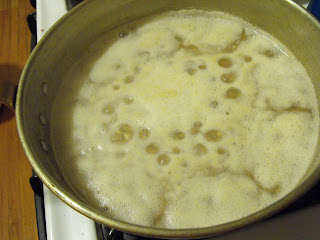I am in Rome staying with friends who are originally from Lucca, Daira and Giacomo. Last night we made a Luccese specialty, rabbit with olives. While I am here, I am exploring the relationship between ancient and modern Italian cuisine. This dish uses no ingredients and no techniques that the ancient Romans did not also have. So, while I have no ancient recipe in front of me, this traditional dish from Lucca is consistent with ancient Roman food. Very exciting, indeed!
Coniglio con le olive alla lucchese
1 rabbit
2 shallots
olive oil
rabbit
nutmeg
half a lemon
olives
white wine
1) First, get a rabbit. Then cut the rabbit into smaller pieces. You can have a butcher do this, or you can do it yourself. If you do yourself, just cut it up like you would any mammal. Separate the limbs and cut along the joints. I discarded the head due to Daira's demands. You can buy rabbit in grocery stores in Rome and it is shockingly inexpensive! Forza Roma!
2) After butchering the rabbit, chop up the shallots. Then, saute the shallots in olive oil.
3) Then add the rabbit pieces to the pot and brown all over.
4) Then, add some white wine and the juice from half a lemon (the lemon juice is the secret ingredient in the dish - do not tell Daira I told you about the secret ingredient!)
Then, add some nutmeg ...
And finally, lots of olives
5) Now, let it cook for a while, 30-45 minutes or so, until the sauce gains this wonderful, thick, velvety texture.
6) Then serve it to your friends!
7) Here it is close up:
Now, the rabbit and the olives are good, but the real star of this dish is the sauce. So, do get lots of fresh bread and do not forget to sop up the sauce with it, or as it is called it Italian, fare scarpetta, to make the little shoe. Which is an awesome term.
Enjoy!


















